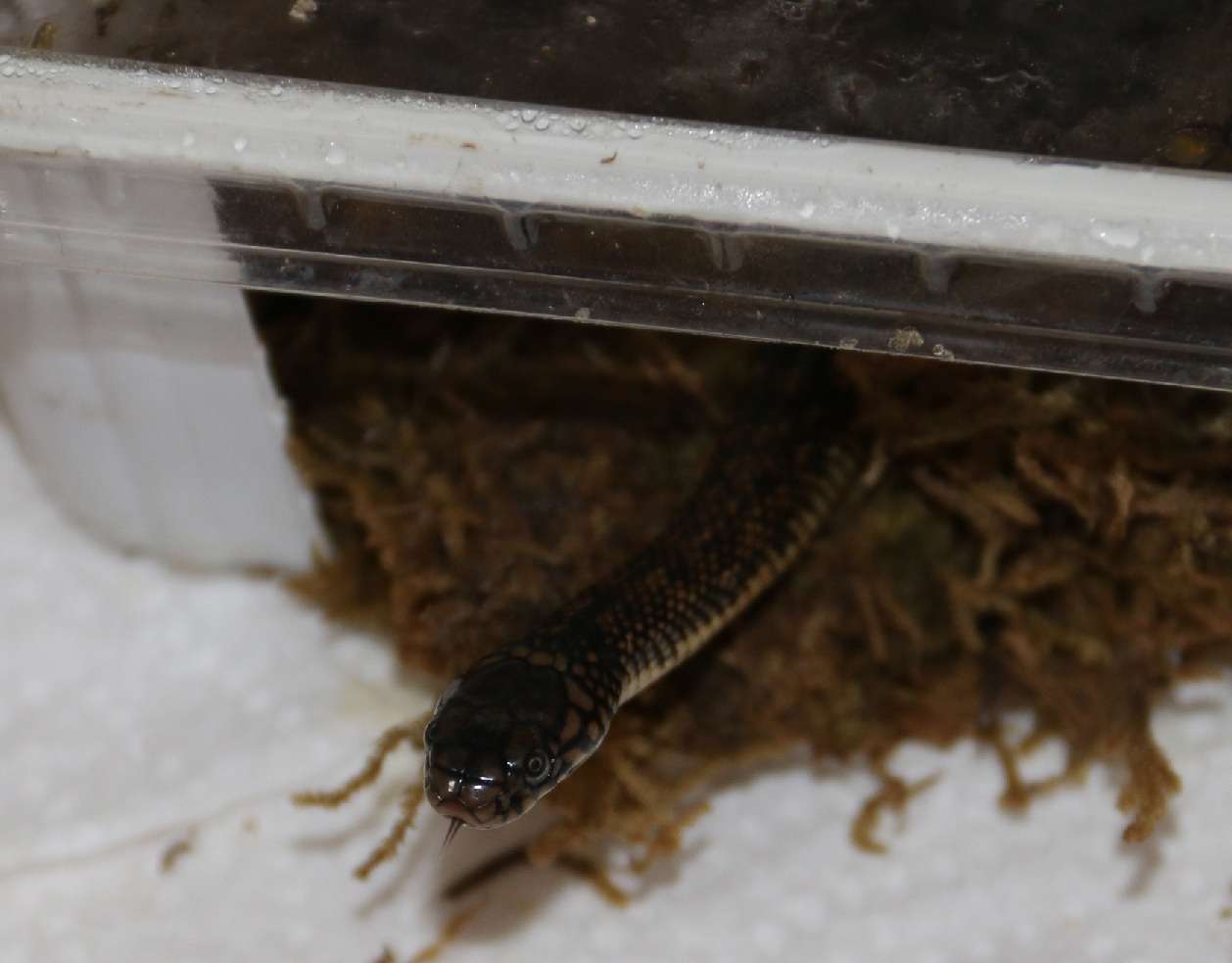Najakeeper
Arachnoprince
- Joined
- Dec 10, 2010
- Messages
- 1,050
A lot of people asked me in several platforms about the perfect starter venomous snake. Giving a proper answer to this question is quite difficult as every single venomous snake should be respected and putting them under the adjective of "starter" may trick people into believing that the amount of respect expected for another species is not necessarily expected for the starter. This is obviously far from the truth so I usually try to avoid answering "the starter" question.
If I am pushed to give an answer, I usually recommend a well studied species, which is local for the potential keeper, with manageable venom and antivenin availability. However, I am going out of my own box here and will recommend a snake that:
a-is a fast elapid
b-has very potent venom
c-has no antivenin available
d-is not very well studied
The species I am talking about is the undescribed species of African water cobras, genus Naja subgenus Boulengerina, location Congo. I have been searching this species for the last 4 years and I have managed to acquire a captive bred pair about a couple months ago. My experience so far fits to what I have been reading about them. These snakes are extremely docile, quite easy to manipulate and reasonably easy to take care of when the research is done properly. In fact, after the initial stage of acclimation, they get so comfortable, they even stop hooding like a cobra normally does. In the last couple of weeks, I haven't observed a single strike, hooding, gaping or any sort of aggressive behavior from neither of the snakes I keep.
The care is also quite simple. A warm end, a cool end, large water dish and a humid box within the enclosure serves them very well. They are fish eaters in the wild and they take frozen/thawed fish readily. But they are also very easy to switch to mice. Just thaw the mice within a container with warm water and some fish, that's it.
Of course, the animal in question should be a captive bred specimen in good health and this is currently a problem. There is only one breeder as of 2013 and he only produces 3 or 4 animals a year. But when this species is widely available to the hobby, I think I have finally found a snake that I can recommend as a first elapid, maybe even as a starter venomous snake.
Here is a quick video of the species I have described above:
[YOUTUBE]_YAVjAavn14[/YOUTUBE]
If I am pushed to give an answer, I usually recommend a well studied species, which is local for the potential keeper, with manageable venom and antivenin availability. However, I am going out of my own box here and will recommend a snake that:
a-is a fast elapid
b-has very potent venom
c-has no antivenin available
d-is not very well studied
The species I am talking about is the undescribed species of African water cobras, genus Naja subgenus Boulengerina, location Congo. I have been searching this species for the last 4 years and I have managed to acquire a captive bred pair about a couple months ago. My experience so far fits to what I have been reading about them. These snakes are extremely docile, quite easy to manipulate and reasonably easy to take care of when the research is done properly. In fact, after the initial stage of acclimation, they get so comfortable, they even stop hooding like a cobra normally does. In the last couple of weeks, I haven't observed a single strike, hooding, gaping or any sort of aggressive behavior from neither of the snakes I keep.
The care is also quite simple. A warm end, a cool end, large water dish and a humid box within the enclosure serves them very well. They are fish eaters in the wild and they take frozen/thawed fish readily. But they are also very easy to switch to mice. Just thaw the mice within a container with warm water and some fish, that's it.
Of course, the animal in question should be a captive bred specimen in good health and this is currently a problem. There is only one breeder as of 2013 and he only produces 3 or 4 animals a year. But when this species is widely available to the hobby, I think I have finally found a snake that I can recommend as a first elapid, maybe even as a starter venomous snake.
Here is a quick video of the species I have described above:
[YOUTUBE]_YAVjAavn14[/YOUTUBE]


